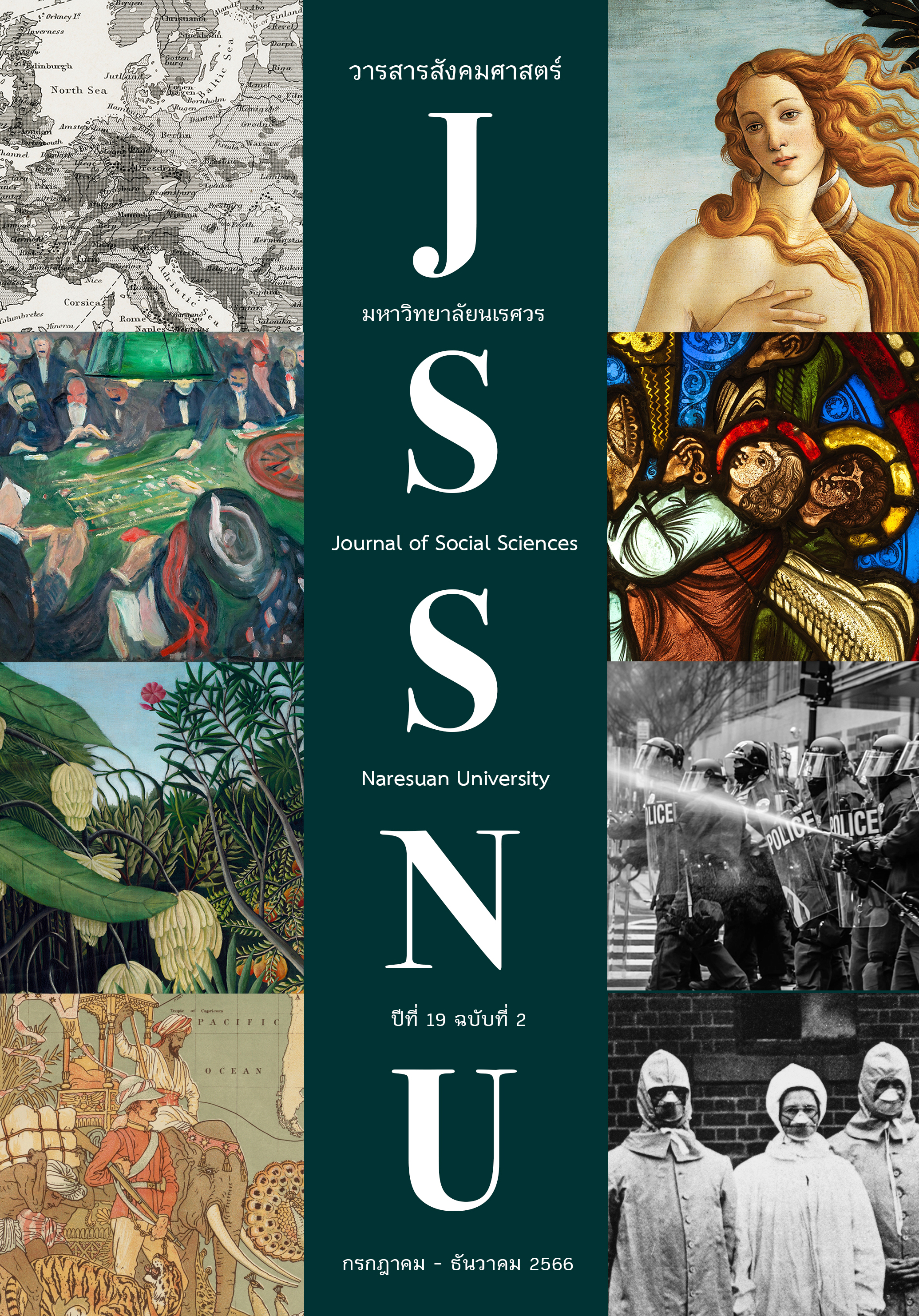People’s Democratic Movement in Post-colonial Period: A Comparative Study of Myanmar, Indonesia and the Philippines
Main Article Content
Abstract
This paper is aimed to compare the political transition patterns and political movement methods of people in Myanmar, Indonesia, and the Philippines in post-colonial. Using qualitative research emphasizes documentary data collection and data analysis by historical research through the concepts of political transition, social movement, and student movement. Presenting social movement groups characteristics based on resource mobilization and student movement tactics against mentioned political transitions.The results of the study show that in the post-colonial period, the political transitions in three of said countries had moved to the democratic period after independence. However, there were still limitations caused by the economic downturn and the conflicts of various political and social groups which changed from the parliamentary democracy to the authoritarian regime. The military dictatorship under General Ne Win launched the Burmese-style socialist development policy from 1962 to 1988. The authoritarian regime of Suharto’s New Order Policy was implemented from 1967 to 1998 in Indonesia. President Marcos declared martial law from 1972 to 1981 to eliminate opposition and dissidents in the Philippines. The people’s political movements in these countries consisted of the uprising of 8-8-88 students, people, and monks who joined the Burmese dictatorship protest (August 8, 1988) in Myanmar; the 1998 Indonesian student movement; and the People’s Power Revolution or EDSA or Yellow Revolution in the Philippines during 1986. The suggestions are to adopt the participatory democracy concept to strengthen the groups’ potential and efficiently promote the knowledge of people’s movement. The strong and weak factors learned from people’s political movements in each country could be decent lessons for people’s movement strategies or tactics in other Southeast Asian countries in the future.
Downloads
Article Details

This work is licensed under a Creative Commons Attribution-NonCommercial-NoDerivatives 4.0 International License.
References
Aspinall, E. (2012). Indonesia: Moral force politics and the struggle against authoritarianism. In M. Weiss & E. Aspinall (Eds.), Student activism in Asia: Between protest and powerlessness (pp. 153-180). Minneapolis & London: University of Minnesota Press.
Beerkens, E. (2008). The student movement and the rise and fall of Suharto. Retrieved January 30, 2023, from https://www.universityworldnews.com
Bertrand, J. (2013). Political change in Southeast Asia. Cambridge: Cambridge University Press.
Bhakti, I. N. (2004). The transition to democracy in Indonesia: Some outstanding problems. In J. Rolfe (Ed.), The Asia Pacific: A region in transition (pp.195-206). Honolulu: Asia Pacific Center for Security Studies.
Boudreau, V. (2004). Resisting dictatorship: Repression and protest in Southeast Asia. Cambridge, UK.: Cambridge University Press.
Caballero-Anthony, M. (Ed.). (2010) Political change, democratic transitions and security in Southeast Asia. London & New York: Routledge.
Charney, M. W. (2009). A history of modern Burma. Cambridge: Cambridge University Press.
Charoensin-O-larn, C. (2002). Khabuan kan khlueanwai thang sangkhom rupbaep mai (in Thai). [New Social Movement] (2nd ed.). Bangkok: Vibhasa Publisher.
Curaming, R., & Claudio, L. (2010). A historicised (re) assessment of EDSA ‘people power’ (1986). Singapore: Asia Research Institute, National University of Singapore.
Fukuoka, Y. (2015). Demystifying ‘people power’ an elite interpretation of ‘democratization’ in Southeast Asia. In W. Case (Ed.), Routledge handbook of Southeast Asian democratization (pp. 85-101). London & New York: Routledge.
Htun, T. (1995). Student activism in Burma: A historical perspective. N.P.: Lawyers Information Network (Link).
Huntington, S. P. (1991). Democracy’s third wave. Journal of Democracy, 2(2), 12-34.
Katsiaficas, G. (2013) Asia’s unknown uprisings volume 2: People power, in the Philippines, Burma, Tibet, China, Taiwan, Bangladesh, Nepal, Thailand and Indonesia, 1947-2009. Oakland, CA: PM Press.
Kingsbury, D. (2002). South-East Asia: A political profile. Melbourne: Oxford University Press.
Kipgen, N. (2011). Societies in political transition: A comparative study of Burma under Ne Win and Indonesia under Suharto. Journal of Asian and African Studies, 47(1), 750-764.
Liddle, R. W. (1992). Indonesia’s past and future. Comparative Politics, 24(4), 443-462.
McGregor, K. (2018). Historical justice and the case of the 1965 killings. in R. W. Hefner (Ed.), Routledge handbook of contemporary Indonesia (pp. 129-139). London & New York: Routledge.
Pintobtang, P. (2009). Krop kan wikhro kanmueang baep thruesadi khabuan kan khlueanwai thang sangkhom (in Thai). [Political analysis framework of social movement theories]. Bangkok: Heinrich Boll Foundation.
Preecharush, D. (2008). Pha Kanmueang Phama Khwamkhatyaeng Khwam Mankhong Nai Lok Thi Rai Phromdaen (in Thai). [Inside Myanmar politics, conflicts, securities in borderless world]. Bangkok: Odeon Store Publisher.
Preecharush, D. (2014). Satharanarat haeng sahaphap mian ma (in Thai). [Republic of the union of Myanmar]. Bangkok: Faculty of Political Sciences, Thammasat University.
Share, D., & Mainwaring, S. (2019). Transitions through transaction: Democratization in Brazil and Spain. In W. A. Selcher (Ed.), Political liberalization in Brazil: Dynamics, dilemmas, and future prospects (pp. 162-200). London & New York: Routledge.
Than, M. (2005). Myanmar in ASEAN: Regional cooperation experience. Singapore: Institute of Southeast Asian Studies.
Topich, W. J., & Leitich, K. A. (2013). The history of Myanmar. Santa Barbara, CA: Greenwood.
Weiss, M., Aspinall, E., & Thompson, M. (2012). Introduction: Understanding student activism in Asia. In M. Weiss, & E. Aspinall. (Eds.), Student Activism in Asia: Between protest and powerlessness (pp. 1-32). Minneapolis & London: University of Minnesota Press.
Wibowo, I. (2001). Exit, voice and loyalty Indonesia Chinese after the fall of Soeharto. Sojourn Journal of Social Issues in Southeast Asia, 16(1), 125-146.


